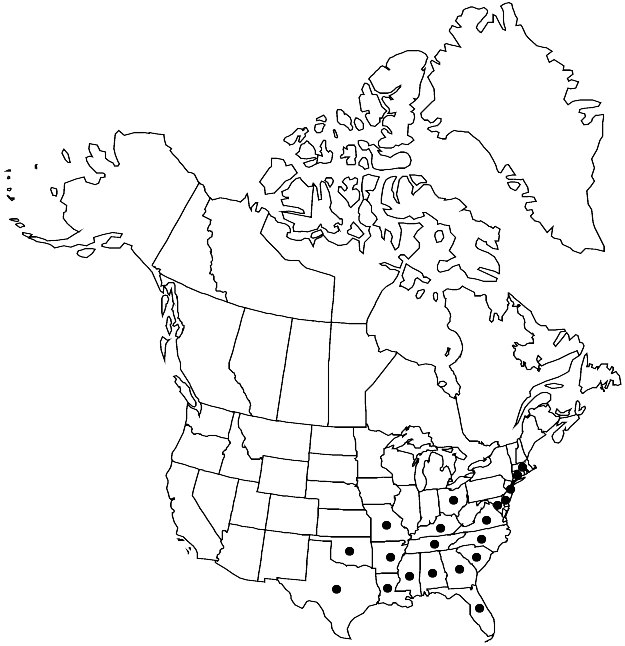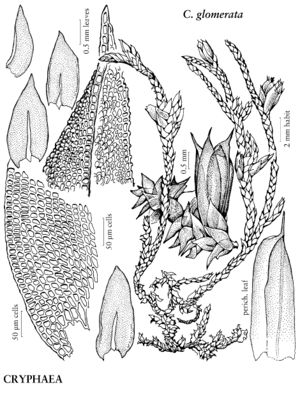Difference between revisions of "Cryphaea glomerata"
in A. Gray, Manual ed. 2, 656, plate 5 [near upper right]. 1856.
FNA>Volume Importer |
imported>Volume Importer |
||
| Line 53: | Line 53: | ||
|publication year=1856 | |publication year=1856 | ||
|special status=Endemic;Illustrated | |special status=Endemic;Illustrated | ||
| − | |source xml=https:// | + | |source xml=https://bibilujan@bitbucket.org/aafc-mbb/fna-data-curation.git/src/bb6b7e3a7de7d3b7888a1ad48c7fd8f5c722d8d6/coarse_grained_fna_xml/V28/V28_919.xml |
|genus=Cryphaea | |genus=Cryphaea | ||
|species=Cryphaea glomerata | |species=Cryphaea glomerata | ||
Revision as of 22:50, 27 May 2020
Stems with branches short to elongate, simple. Leaves wide-spreading when moist, 0.8–1.2 mm; apex broadly acute; costa ending mid leaf or in base of acumen, laterally spurred, tip ± 2-fid. Perichaetia with inner leaves 1.6–1.9 mm, awn usually distinct, denticulate, 1/5–1/4 length expanded portion of leaf. Capsule with peristome double; exostome teeth single; endostome segments linear (slender). Calyptra broadly conic. Spores smooth or papillose.
Phenology: Capsules mature Sep–Jun.
Habitat: Twigs, branches, trunks of shrubs and trees, logs, rock, humid forests
Elevation: low to moderate elevations (0-1000 m)
Distribution

Ala., Ark., Conn., Del., Fla., Ga., Ky., La., Md., Mass., Miss., Mo., N.J., N.C., Ohio, Okla., S.C., Tenn., Tex., Va.
Discussion
Cryphaea glomerata often grows mixed with C. nervosa; the two can be easily distinguished under low magnification by the more narrowly pointed and plicate-appearing leaves of C. nervosa. The ranges of C. glomerata and the subtropical C. filiformis overlap in southern Florida. Cryphaea glomerata is similar to, and often occurs with, C. ravenelii, which is easily distinguished by its blunt leaf apex.
Selected References
None.
